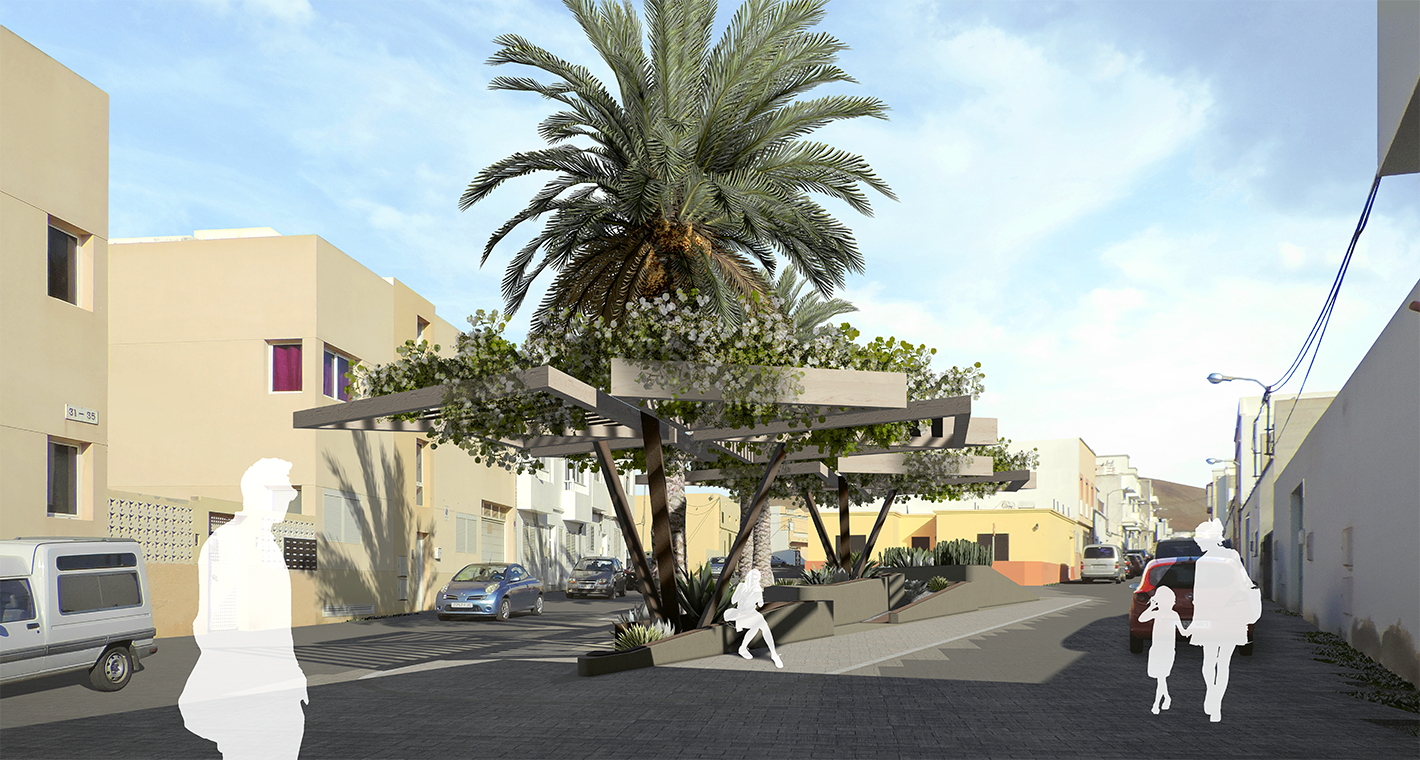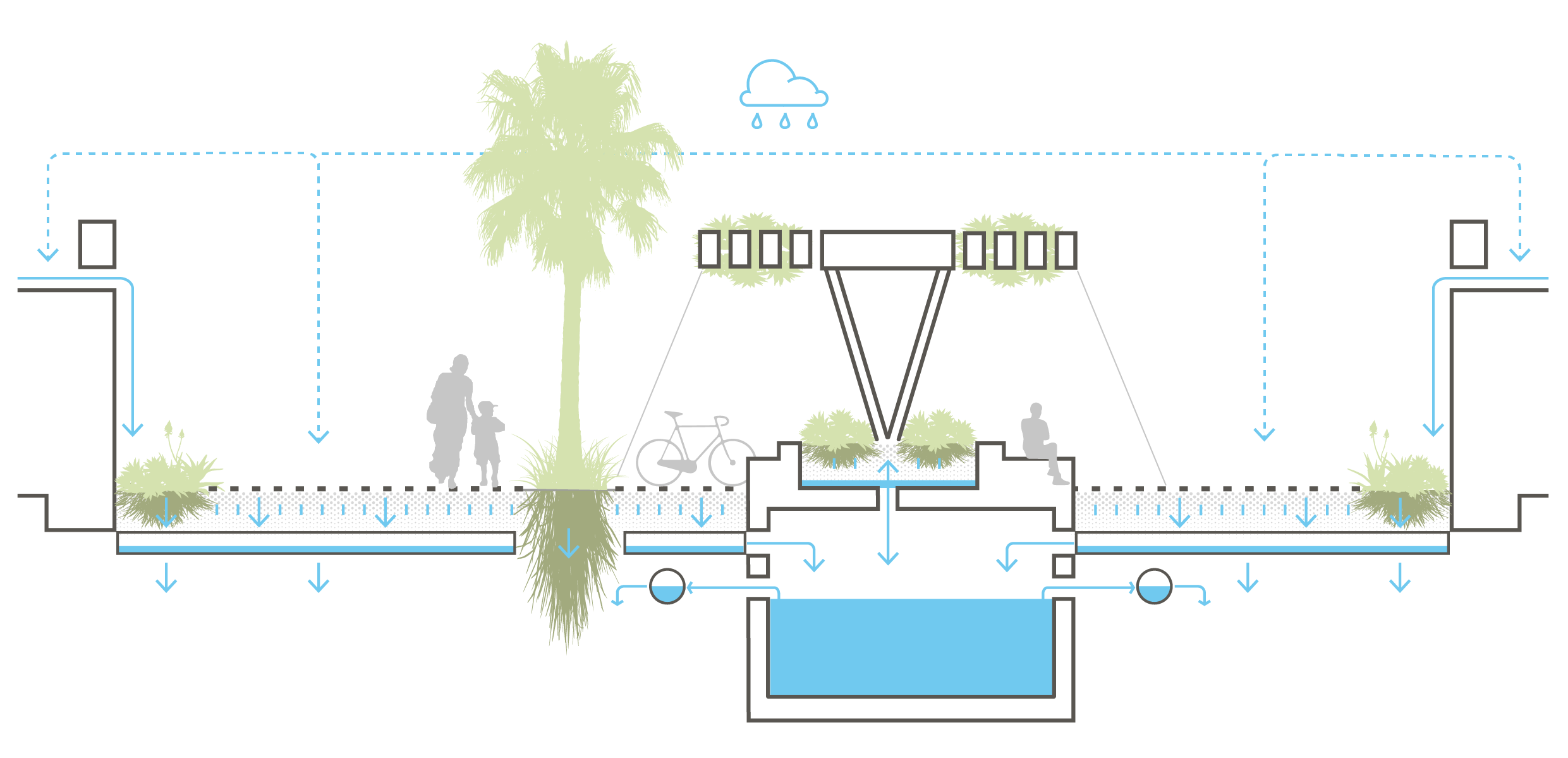The digital totems are smart weather stations that collect and display environmental and local information for tourists and visitors of beaches and waterfronts in the Canary Islands (Spain). They are part of an ICT infrastructural network that celebrates the rooted relationship between the Canary Islands culture and their extraordinary climate.
The design is inspired by the aboriginal ceramic art pieces from the indigenous inhabitants of the islands. This art was based on the worship of the sun god “Magheq”, usually represented through circular shapes and decorative geometric patterns.
The design consists of a digitally fabricated solid wood ring standing vertically with a north-south orientation. The southern face hosts an array of photovoltaic modules that turn sunlight into electricity for phone and e-bike charging. The northern face contains a 1,2 m2 video screen that broadcasts real-time environmental data captured by the totem and useful information regarding tourist activities and services in the area. In addition to its technological and digital features, the totem also provides analogy and material values to attract attention and enrich the pedestrian
urban experience.
The resulting solution celebrates more than five hundred years of the creative relationship of the Canary Islands with the sun. From the marking of the solstices for agricultural purposes and the sun and beach tourism to the more recent challenges of producing sustainable energy with solar panels.









